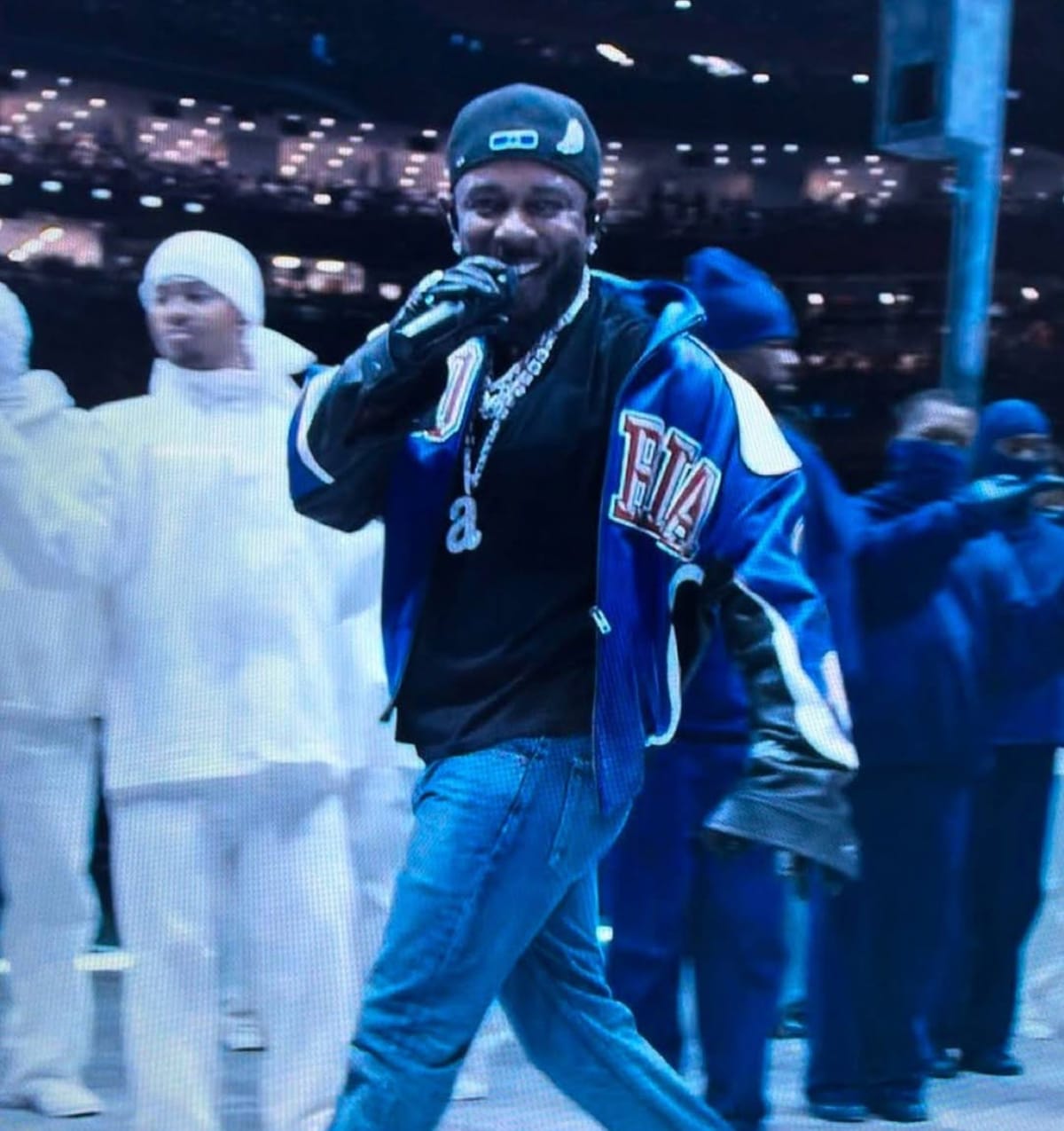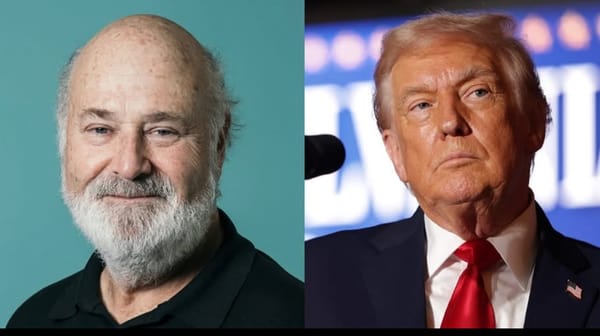Who the hell is this “RAPPER”

Like many of you, I had no idea who Kendrick Lamar was beyond knowing he was a young rap artist, and I wasn’t exactly excited for his Super Bowl halftime show. When I watched it, I was confused and, honestly, let down. I held back from posting a full-on negative reaction on social media, but I definitely saw plenty of people who did. At the same time, I also saw a few who thought it was brilliant and that really puzzled me.
So, I started digging into who he is, his music, and what he represents. And let me tell you, I‘ve done a complete 180. The depth of his storytelling, his artistry, and the meaning behind his work go far beyond just a performance. I get it now.
Dear Reader,
If you found yourself confused, unsettled, or even dismissive of Kendrick Lamar’s Super Bowl halftime performance, this letter is for you. I’m not here to argue, but to offer insight—because what Kendrick did on that stage wasn’t just entertainment. It was a message, a reflection of our times, and a statement about resilience, history, and the power of truth in art.
Maybe you were expecting a more traditional, high-energy show filled with feel-good nostalgia. Maybe you just weren’t familiar with Kendrick Lamar or his music. Or maybe something about the performance made you uncomfortable, and you’re not entirely sure why. Whatever the case, let’s break it down. Let’s talk about what Kendrick’s performance meant, why it was important, and why understanding it matters—not just for hip-hop fans, but for all of us.
Kendrick Lamar: More Than Just a Rapper
Kendrick Lamar isn’t your typical mainstream artist. His music isn’t just about catchy hooks and danceable beats. He is a poet, a storyteller, and a cultural historian. His work is layered, complex, and deeply intentional. Every song he performs carries a message—sometimes about systemic oppression, sometimes about personal struggles, but always about something real.
Throughout his career, Kendrick has used his platform to address the realities of being Black in America. His Pulitzer Prize-winning album DAMN. was proof that hip-hop can be literature, a raw and urgent exploration of faith, fear, and survival. His album To Pimp a Butterfly blended jazz, funk, and spoken word to create anthems about Black identity, oppression, and self-love. His entire discography is a conversation—one that demands engagement, not just passive listening.
So, when Kendrick Lamar was chosen to perform at the Super Bowl, it was never going to be just a halftime show. It was going to be a statement.
What You Saw at Halftime (And What You Might Have Missed)
Kendrick’s performance wasn’t designed to be flashy in the way past Super Bowl shows have been. There were no fireworks, no elaborate costume changes, no gimmicks. Instead, it was sharp, powerful, and deliberate.
He took the stage in a minimalist setup, dressed in attire that carried cultural weight. His presence alone—his body language, his movements—spoke volumes before he even said a word. Every detail mattered.
The setlist? It wasn’t just a collection of his biggest hits. It was carefully chosen to tell a story. If you were paying attention, you saw him channeling the energy of generations before him—artists, activists, and truth-tellers who have used their voices to challenge the status quo. His performance was a mirror reflecting America back at itself, forcing the audience to reckon with history, identity, and the unshakable spirit of a people who refuse to be erased.
And yet, some people didn’t see the message. Some dismissed it as “too political,” “too dark,” or simply “not entertaining enough.”
This brings us to the bigger question: Why do performances like this make people uncomfortable?
Why This Performance Matters
If Kendrick’s halftime show made you uncomfortable, that discomfort is worth sitting with. Because discomfort is often the first step toward awareness.
There’s a long history of Black artists using music as resistance. From the blues singers of the early 20th century to the civil rights anthems of the 1960s to the conscious rap of the 1990s, music has always been a form of protest, education, and empowerment. But every time an artist steps onto a national stage and delivers a message that challenges mainstream narratives, there’s pushback.
Think back to Beyoncé’s Super Bowl performance in 2016, where she paid tribute to the Black Panther Party. It was powerful. It was intentional. And it was controversial. Some viewers saw it as a celebration of Black pride and resistance; others saw it as an attack on police and authority. But that reaction only proved how necessary the message was.
Kendrick’s performance follows in that tradition. He wasn’t just rapping. He was demanding to be seen, to be heard, to be understood. He was reminding America that art isn’t always meant to comfort—it’s meant to challenge, to provoke, to inspire.
And this is why you need to understand.
Why You Need to Understand
You don’t have to love Kendrick Lamar’s music. You don’t even have to enjoy hip-hop. But if you live in this country—if you care about its history, its culture, and its future—you owe it to yourself to listen.
Because when an artist like Kendrick speaks, he’s not just speaking for himself. He’s channeling the voices of communities that have been silenced, overlooked, and ignored. He’s telling the stories that don’t always make it into history books.
Understanding Kendrick’s performance isn’t just about appreciating art. It’s about understanding America—all of America. The parts that are celebrated, and the parts that are too often swept under the rug.
If you felt like his performance didn’t resonate with you, ask yourself why. Is it because you weren’t familiar with his work? Because the themes felt too heavy for a football game? Because you prefer entertainment that doesn’t make you think too much?
That last one is important. Because the truth is, entertainment has always been political. The choice of who gets to take the stage, what kind of stories get told, and how audiences react—those are all reflections of deeper societal currents.
Kendrick Lamar’s halftime show wasn’t meant to be easy. It wasn’t designed for passive enjoyment. It was a challenge. And that challenge still stands.
The Next Step: Listen, Learn, Engage
So, what now?
If Kendrick’s performance left you confused, take this as an opportunity to dive deeper. Listen to his albums with an open mind. Read about the history of hip-hop as a form of protest. Engage with perspectives outside of your own.
Because art like this doesn’t just exist to be consumed—it exists to spark conversations. And those conversations matter.
The next time an artist steps onto a stage and delivers a message that feels uncomfortable, resist the urge to dismiss it. Instead, ask yourself: What is this artist trying to say? Why does it matter? And what does my reaction to it say about me?
Because understanding Kendrick Lamar isn’t just about understanding a halftime show. It’s about understanding the world we live in. And that, more than anything, is worth your attention.
Sincerely,
Someone Who Listened
Julie Bolejack, MBA



